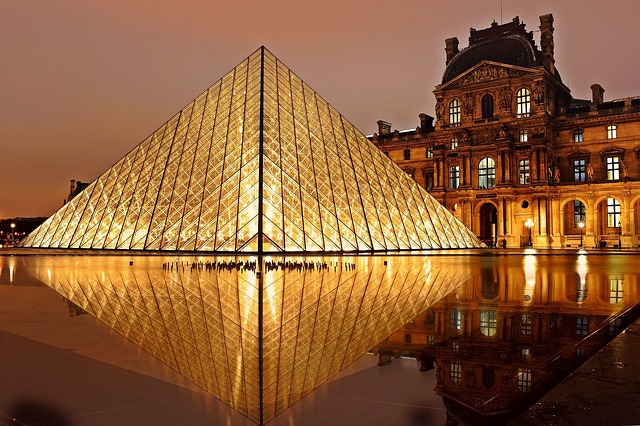Exploring Belgium’s Medieval Cities: A Journey Through Time

Belgium, a small yet culturally rich country in the heart of Europe, is home to some of the most enchanting medieval cities in the world. These cities are not just relics of the past; they are living, breathing monuments that transport visitors back to an era of knights, castles, and cobblestone streets. From the fairy-tale charm of Bruges to the grandeur of Ghent and the fortified walls of Namur, Belgium’s medieval cities offer a unique blend of history, architecture, and vibrant modern life. In this article, we will delve into the magic of these timeless destinations and explore why they continue to captivate travelers from around the globe.
1. Bruges: The Venice of the North
Often referred to as the “Venice of the North,” Bruges is a city that seems frozen in time. Its intricate network of canals, Gothic spires, and medieval market squares make it one of the most picturesque cities in Europe. As you wander through its narrow streets, you’ll feel as though you’ve stepped into a painting from centuries ago.
- Historical Significance : Bruges flourished during the Middle Ages as a major trading hub, thanks to its strategic location near the North Sea. Merchants from across Europe flocked to the city, bringing with them wealth and cultural influences that shaped its architecture and art.
- Must-See Attractions :
- The Belfry of Bruges : This iconic bell tower offers panoramic views of the city and houses a treasure trove of historical artifacts.
- Basilica of the Holy Blood : Home to a venerated relic believed to contain Christ’s blood, this church is a testament to Bruges’ deep religious roots.
- Market Square (Grote Markt) : Surrounded by colorful guildhalls and bustling cafes, this square has been the heart of Bruges for centuries.
- Why Visit? : Whether you’re gliding along the tranquil canals on a boat tour or savoring Belgian waffles at a quaint café, Bruges promises an unforgettable journey into the past.
2. Ghent: A Tapestry of History and Modernity
While Bruges may steal the spotlight for its medieval charm, Ghent is equally deserving of attention. This vibrant city seamlessly blends its rich history with a lively contemporary scene, making it a favorite among travelers seeking both culture and entertainment.
- Historical Highlights : During the Middle Ages, Ghent was one of Europe’s largest and wealthiest cities. Its prosperity is reflected in its stunning architecture, including the towering Saint Bavo’s Cathedral and the imposing Gravensteen Castle.
- Key Landmarks :
- Gravensteen Castle : Known as the “Castle of the Counts,” this medieval fortress is a masterpiece of military architecture and offers fascinating insights into the region’s turbulent history.
- Saint Bavo’s Cathedral : Housing the world-famous Ghent Altarpiece (also known as the Adoration of the Mystic Lamb), this cathedral is a must-visit for art enthusiasts.
- Graslei and Korenlei : These picturesque quaysides along the River Leie are lined with beautifully preserved medieval buildings and provide a perfect backdrop for photography.
- Modern Appeal : Despite its historic allure, Ghent boasts a youthful energy fueled by its large student population. Trendy bars, street art, and music festivals add a dynamic edge to the city’s timeless appeal.
3. Namur: Where Rivers Meet History
Nestled at the confluence of the Meuse and Sambre rivers, Namur is a hidden gem that showcases the best of Belgium’s medieval heritage. While it may be less touristy than Bruges or Ghent, Namur offers a more authentic glimpse into the country’s storied past.
- Fortified Legacy : Namur’s strategic location made it a coveted prize throughout history, resulting in the construction of the formidable Citadel of Namur. Perched atop a hill overlooking the city, the citadel served as a defensive stronghold and remains one of Namur’s top attractions today.
- Exploring the Citadel :
- Visitors can explore underground tunnels, ancient barracks, and breathtaking viewpoints that reveal the natural beauty of the surrounding landscape.
- Guided tours provide fascinating stories about the citadel’s role in various wars and sieges.
- Cultural Delights : Beyond its military history, Namur is also known for its vibrant arts scene and annual festivals, such as the Fête de Wallonie, which celebrates regional traditions and cuisine.
4. Antwerp: A Merchant’s Paradise
Although Antwerp is often associated with its Renaissance-era golden age, its medieval roots are equally compelling. As a key port city during the Middle Ages, Antwerp played a crucial role in shaping Europe’s economic and cultural landscape.
- Medieval Marvels :
- Antwerp Cathedral (Cathedral of Our Lady) : This towering Gothic structure dominates the city skyline and houses works by renowned artists like Peter Paul Rubens.
- Vlaeykensgang Alley : Tucked away behind the bustling streets, this charming alleyway takes you back to Antwerp’s medieval days when it was a thriving center for trade and commerce.
- A City of Contrasts : Antwerp effortlessly combines its medieval past with a forward-thinking present. Fashion boutiques, diamond workshops, and avant-garde museums coexist harmoniously with centuries-old landmarks.
5. Tournai: A Hidden Medieval Treasure
Located near the French border, Tournai is one of Belgium’s oldest cities and a UNESCO World Heritage Site. Its Romanesque and Gothic architecture sets it apart from other medieval cities in the country.
- Architectural Wonders :
- Tournai Cathedral : This magnificent cathedral features five towers and stunning frescoes, making it a highlight of any visit.
- Belfry of Tournai : Another UNESCO-listed site, this belfry symbolizes the city’s independence and resilience during the Middle Ages.
- Local Charm : Tournai exudes a laid-back atmosphere, where locals gather in cozy cafés and markets brimming with fresh produce and handmade goods.


